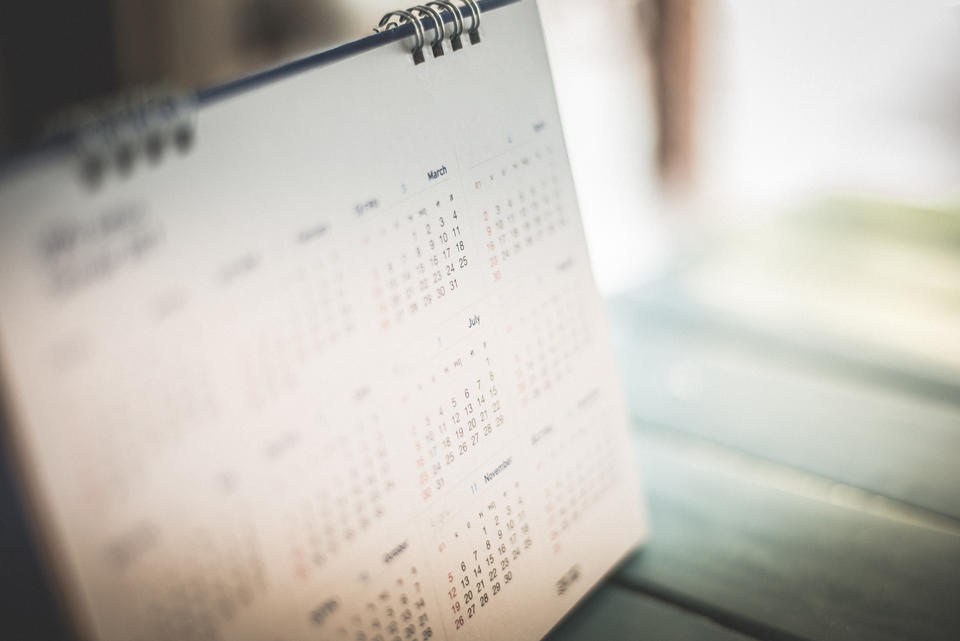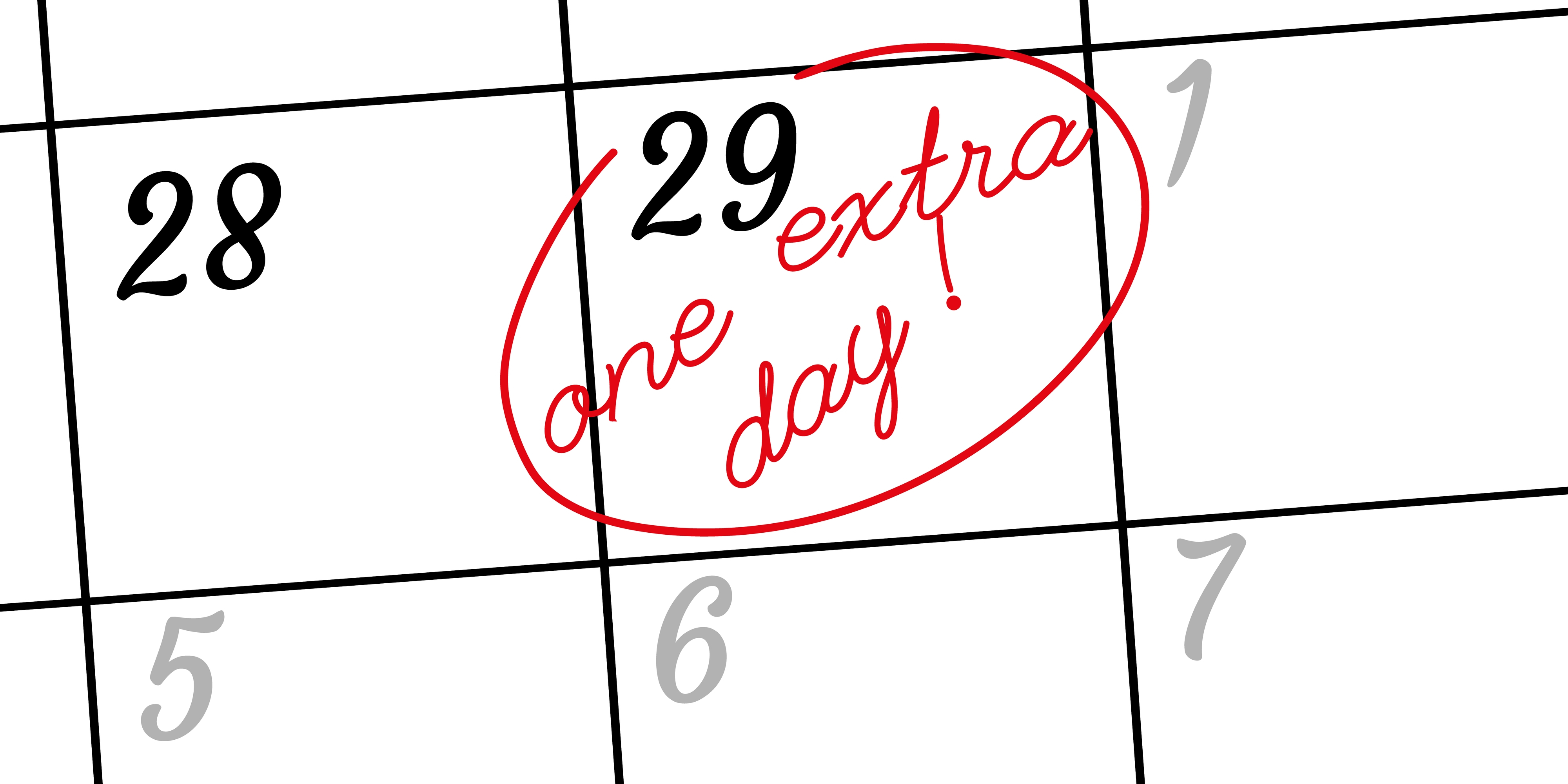Taking Measure
Just a Standard Blog

Calendars, like other standards, exist so we can all agree on the date, time, distance and more.
The length of a meter, the mass of a kilogram and the day of the year are all standards in the background of our daily lives.
Standards exist so we can agree on how to measure quantities, with everyone achieving the same results.
We don’t think much about them, but life would be very difficult without folks worldwide agreeing on these standards. If we disagreed on things like the time and date, it would be hard for us to, say, meet a friend for dinner or know when to arrive for an appointment.
And standards are what we do here at NIST, so this quirky extra day on the calendar fascinates me as a NIST researcher.
With our calendar, we must periodically add an extra day, called the leap day, to synchronize with Earth revolving about the Sun.
This period is called the solar year, and it lasts approximately 365 and one-quarter days . For this reason, our 365-day calendar is not a perfect representation of the actual solar year, so we add one day every four years to keep it close.
How We Got Feb. 29
Calendars have a fascinating history. The passage of days has been recorded since the dawn of humankind. People have observed the repetition of the position of the Sun and the stars, and the position and shape of the Moon, to mark the passage of time. Historically, humans also observed the weather, the periodic flooding of rivers, the migration of animals and more to predict how many days it would take before the patterns were repeated. This was the early implementation of calendars.
There are records of ancient Babylonians and Egyptians recording their calendars as early as 3000 B.C., including weeks and months.
Some early calendars had 12 months of 30 days each (based on the 29½ day lunar cycle). These calendars added a variable “month” that lasted several days, which was their way of adjusting for the unknowns.
In 45 B.C., Julius Caesar refined the Roman calendar to be 365 days, plus a leap day every four years, referred to as the Julian calendar. It was the most accurate calendar then, with many other variations in different places around the world.
In 1582, Pope Gregory XIII issued a new calendar, improving on the Julian calendar, which had become 10 days off. This Gregorian calendar, as it became known, adjusted for the overestimate of the solar year, which was actually 365.242190 days, not 365.25 days as previously estimated. This calendar reduces the number of leap years by three in every 400 years (some century years are not leap years, including 1900 and 2100). This is the calendar we still use today.
People born on a leap day (even Superman!) only get to celebrate their actual birthday every four years, although they still age the same as everyone else. They most likely celebrate the day before or the day after their calendar birthdate. These folks are sometimes referred to as leaplings, leapers or leapsters. There are online groups and special events for them to get together!
How Will You Spend Your Extra Day?

So, this week, we get an extra day. What shall we do?
Instead of thinking, “This year is a day longer than most years,” it could be fun to think of a way to celebrate the extra day differently than an average weekday.
Perhaps we can do something out of the ordinary, try something new or do something we have been putting off because we “just don’t have the time.” It could even involve taking actual leaps (safely) instead of walking.
Here at our NIST campus in Boulder, Colorado (as well as at our other locations), we’re having a “leap” opportunity at 2:29 p.m. local time on Thursday. Employees will have a chance to play a game of hopscotch, and we’ll learn safety tips while we take our leap day “leaps” on the hopscotch board.
Standards Are All Around Us
We have standards so measurements are the same around the world. They facilitate commerce, safety, synchronization and communications. Imagine how complicated something like an international sports tournament would be if the meter were a different length in every country!
In addition to measurement units, there are standards for parts, protocols for how your device gets data from the internet, guidelines for cybersecurity, and reference databases of properties of materials. We also have standard reference materials that labs and manufacturers use to ensure their equipment makes accurate measurements or performs other quality control tests. They are sometimes called “truth in a bottle.” NIST even has a standard reference material (SRM) for peanut butter!
My job at NIST involves timekeeping and making sure time.gov always gives you the accurate time. Time.gov lets you see the official U.S. time in multiple time zones at once. It actually uses your computer clock to measure the round-trip delay of the request to the NIST server so that it can display the correct time on your screen.
Though it’s not directly related to my role at NIST, I like to think about the technical makeup of standards and how these relate to popular culture. Anything that gives you a score or a grade can relate to standards. Your high score on a video game is a type of standard. It’s a standard you’ve set for yourself that you may try to beat next time you play the game.
A world record is also a great example of metrology. People measure the quirkiest things, such as the world’s tallest dog (currently Zeus the Great Dane), and create world records. Once you measure that, it becomes a standard. Someone else may come along and break that weird record.
It’s fun to ponder the relative perception of time over our lifetimes, how many licks it takes to reach the center of a lollipop, funny world records and, of course, what to do differently on leap day!
Whatever you’re doing on this extra day on Thursday, I hope you can (safely) leap into something more fun than you’d do on an ordinary weekday. Happy leap day!
How are you celebrating leap day? Tell us in the comments below.
About the author
Related posts
Comments
That sounds amazing! Way to shake things up!
In a table top role playing game, we are playing various fairies. Instead of the typical measurements created by humans, I use the sugar cube for my standard measurement of everything. So my fairy is 9" tall by human standards, but by sc he is 15 sugar cubes tall, and he's not 0.54 pounds, he is 106.5 sugar cubes.






Your article inspired me to change things up on Thursday by not complying with standards. I will measure time, distance, weight and volume using un-standards. I have a small 'hourglass' of sand from a long lost game and I'm not sure how long it takes to empty from the top to the bottom, and I'm not going to check. Whatever it is, will be my unit of time (counting how many flips of the glass vessel to achieve tasks.) I will measure dimensions of objects using an eraser for small things, a bottle for larger, and my dog for very large things or how far apart things are from one another. I'll weigh stuff using 2 identical baskets hanging on a dowel rod which pivots atop another dowel and count the number of oranges it takes to achieve balance. All the counting can be done by replacing numerals with colors and I have the rest of today to create a system to calculate volume. This could be fun!